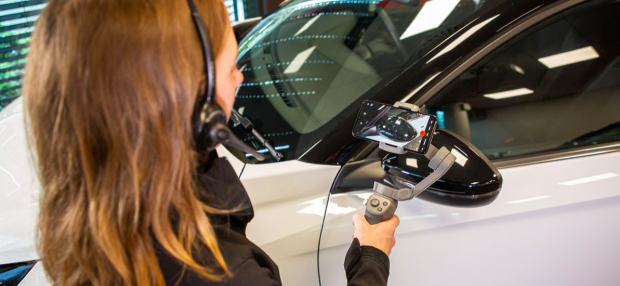 The lasting effects of how Coronavirus-19 will spread its impact through the motor industry and selling cars cannot be known, but for many it has merely sped up the changes we have witnessed over a decade, writes Robin Roberts.
The lasting effects of how Coronavirus-19 will spread its impact through the motor industry and selling cars cannot be known, but for many it has merely sped up the changes we have witnessed over a decade, writes Robin Roberts.
In a social media post this week, Lamborghini said it was never going to display at a motor show again but would instead concentrate on more personal and exclusive events for owners and potential owners.
Now you may not have considered such an exotic car but its presence at a motor show, along with other super-cars and exotic models, would pull in crowds and push up ticket sales.
However, the cost of attending a motor show for manufacturers can be eye-watering and run into millions of pounds or Euros for a typical 10 day event and in today’s cost conscious business world it has steadily become harder to justify.
It was little surprise to see fewer and fewer car makers attending the international events and their subsequent cancellations were expected while others tried to make them different and more interesting for attendees with activity related features.
In the background to all the activities was the spectre of slowing sales hanging over them, with rising voices speaking out against the motor car and the adoption of low carbon and zero-emission vehicles which manufacturers have been very gradually introducing after a lot of expense.
National pride has kept some shows going when their significance with new model reveals was dimming but in certain parts of the world the car market is still huge and the events can be a valuable showcase.
The events need backing up with sales and these have been falling for nearly every manufacturer and the dealer network which support and feed off them. Also, they have been hit by demands from the car makers for ever more impressive and expensive showrooms to display stock while councils and landlords push up their bills.
They are being gathered up in a web and alongside all this activity and pressure has been the other web, the internet. It has widened and deepened and now plays a part somewhere in every car sale, from viewing models on line to delivering them to buyers.
Some say the internet will replace the interest in showrooms, but a survey this month indicated there is still space for the showroom in society. People by and large want to go to a showroom to see, touch and experience a potential new car.
We know that they have been closed for three months in Britain, slightly longer outside England, and visiting them in future will not be the same as it was before lockdown. Manufacturers and dealer groups have established protocols and systems to handle visiting buyers and the casual caller is being discouraged in favour of booking a slot in the showroom,

When you arrive the social distancing rules will apply, one-way systems will be in place and there will be protection to cope with sitting in and examining a car. The law has been changed to permit solos test drives subject to insurance conditions but when the demonstrator is returned it must be taken out of service until its hygienically cleaned, typically 30 mins or more.
Paperwork is being replaced by apps and electronic signatures for documents and this will also apply to service visits where there will be fewer mechanics or technicians in a given area and you may have to wait longer to get an agreed service day and time. You are most likely to have to pay more as well for the service to be carried out as the business seeks to recover its additional costs.
Back in the showroom, the price of a car is very likely to be hard to negotiate as margins are squeezed and every pound will be needed so the incentives offered by manufacturers, either in part exchange or under a scrappage deal, will be very important. If you buy on-line there is likely to be even less discount haggling.
At least a buyer can always search on-line for free and narrow down choices before they begin discussing the eventual purchase.
This all means there is less need for so many dealerships, sales and support staff and a couple of big groups have indicated they are expecting to make thousands redundant in the near future due to contractions in the market. For contractions, read squeeze.
That squeeze is taking breath out of the business so what will the future of forecourts look like?
No-one knows for certain and there as several possible scenarios but the days of massive dealer groups look numbered unless they can dramatically cut costs and non-essential elements. If you own your own land now it will be more stable in future and you can avoid lease leverage; with the slowdown in showroom and service traffic the need for big floorspaces will be reduced so smaller units can be justified and cost less in rates; more off-site servicing will develop and possibly the biggest change could see call and collect servicing alongside new car deliveries, so customers don’t have to visit a showroom or service centre at all.

There may be a time when a buyer never meets the salesman or technician looking after their car in the same way they remotely deal with their insurer or lender.
We are seeing the changes now in the cars we drive and about to see the evolution of the car dealership as well, so it’s to be expected we will experience a rethink on motor shows, even if our love affair with the car and in particular, the super-car, endures a lot longer.


